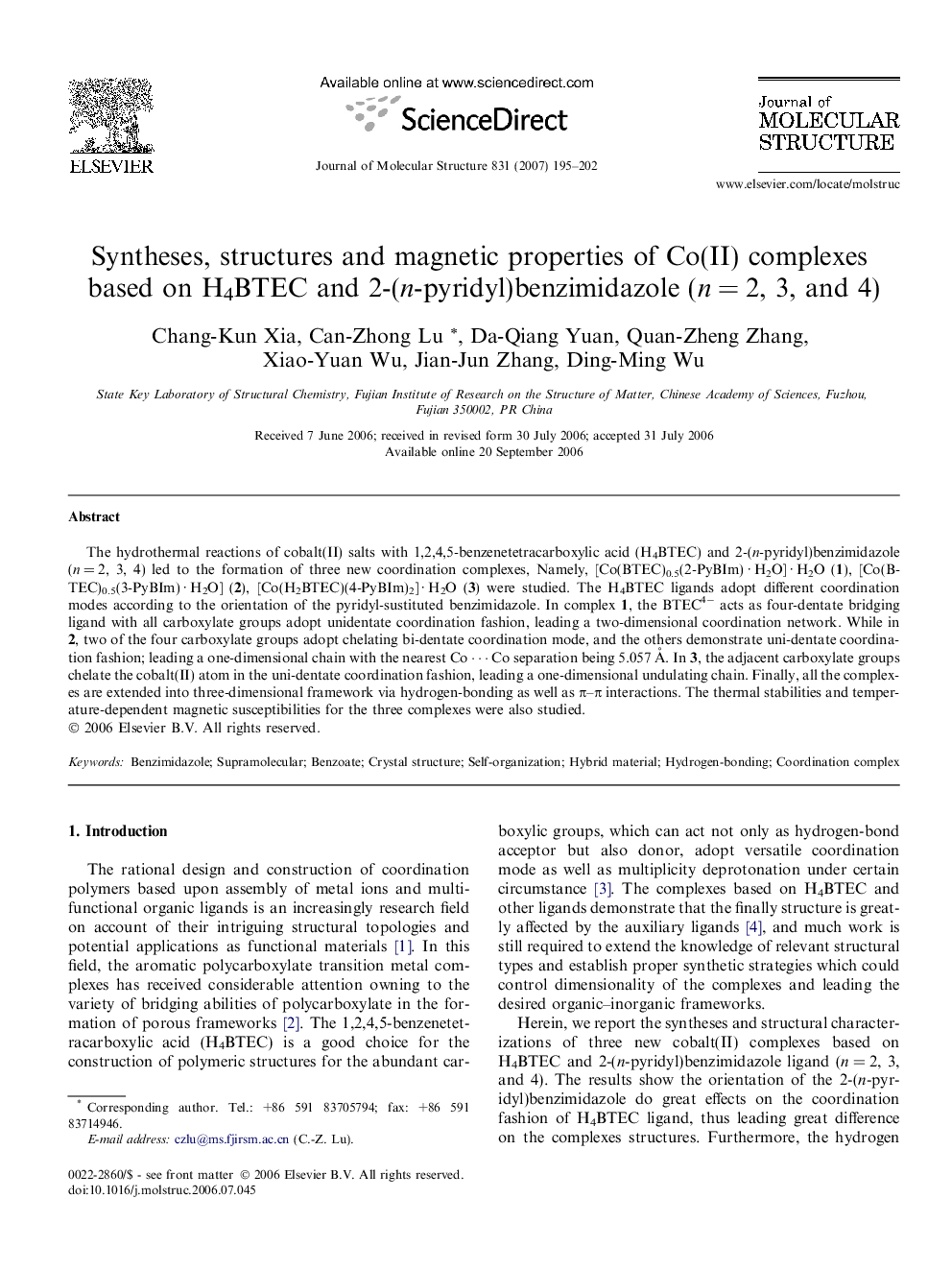| Article ID | Journal | Published Year | Pages | File Type |
|---|---|---|---|---|
| 1410990 | Journal of Molecular Structure | 2007 | 8 Pages |
The hydrothermal reactions of cobalt(II) salts with 1,2,4,5-benzenetetracarboxylic acid (H4BTEC) and 2-(n-pyridyl)benzimidazole (n = 2, 3, 4) led to the formation of three new coordination complexes, Namely, [Co(BTEC)0.5(2-PyBIm) · H2O] · H2O (1), [Co(BTEC)0.5(3-PyBIm) · H2O] (2), [Co(H2BTEC)(4-PyBIm)2] · H2O (3) were studied. The H4BTEC ligands adopt different coordination modes according to the orientation of the pyridyl-sustituted benzimidazole. In complex 1, the BTEC4− acts as four-dentate bridging ligand with all carboxylate groups adopt unidentate coordination fashion, leading a two-dimensional coordination network. While in 2, two of the four carboxylate groups adopt chelating bi-dentate coordination mode, and the others demonstrate uni-dentate coordination fashion; leading a one-dimensional chain with the nearest Co ⋯ Co separation being 5.057 Å. In 3, the adjacent carboxylate groups chelate the cobalt(II) atom in the uni-dentate coordination fashion, leading a one-dimensional undulating chain. Finally, all the complexes are extended into three-dimensional framework via hydrogen-bonding as well as π–π interactions. The thermal stabilities and temperature-dependent magnetic susceptibilities for the three complexes were also studied.
